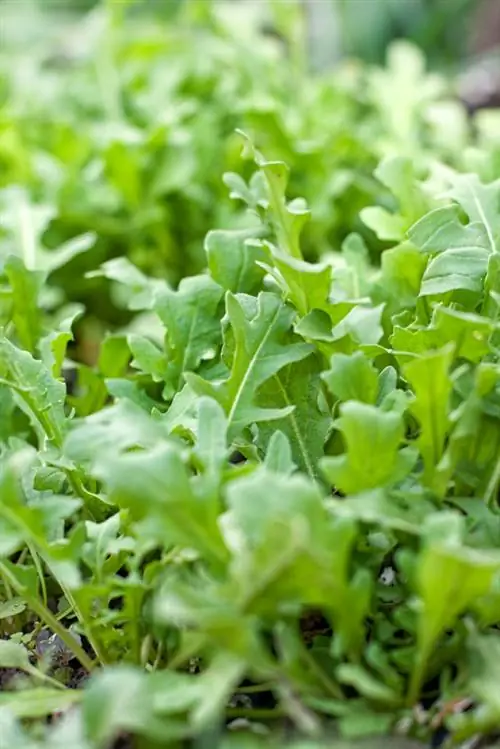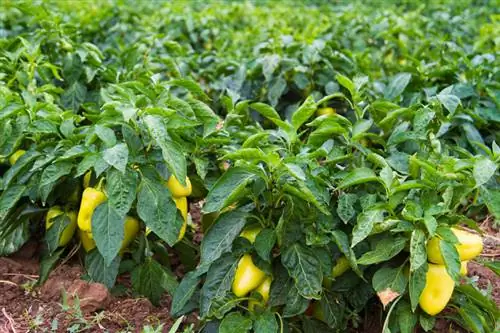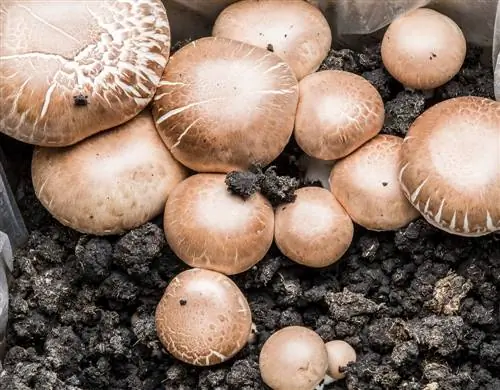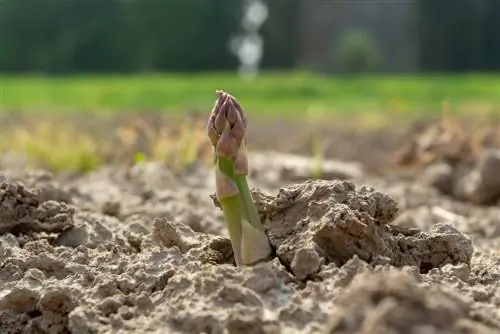- Author admin [email protected].
- Public 2023-12-16 16:46.
- Last modified 2025-01-23 11:19.
Rocket - better known by its Italian name arugula - is a popular salad and seasoning plant that is mainly used in Mediterranean cuisine. Growing it in your own garden is easy and you will be rewarded with a great taste experience.
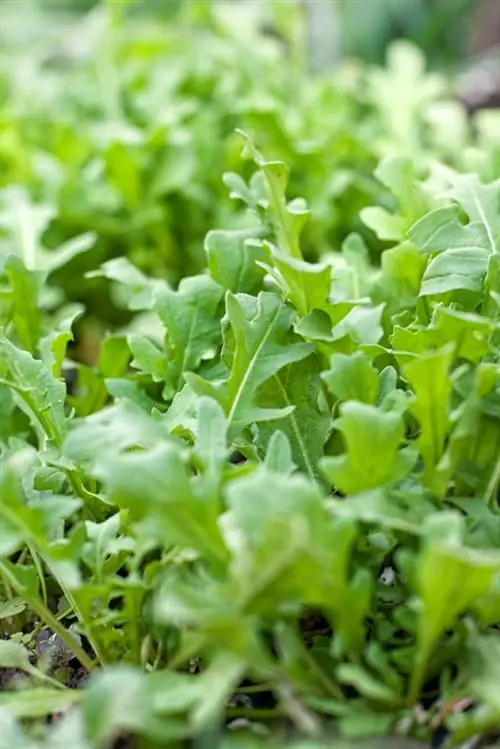
How do you plant rocket in your own garden?
Rocket, also known as arugula, is easy to grow in the garden, greenhouse or on the balcony. From March onwards, sow in rows or spread out in beds, cover the seeds lightly with soil and water well. Choose a sunny to partially shaded location with well-drained soil.
What types of plants are there?
There are mainly two types of rocket from the cruciferous family available commercially:
- annual garden mustard rocket (bot. Eruca sativa), also called lettuce or oil rocket
- perennial wild rocket (bot. Diplotaxis tenuifolia), also called narrow-leaved double seed
Both species are easy to care for and equally suitable for growing in the garden, greenhouse or on the balcony. Wild rocket varieties have a stronger taste.
How does sowing succeed?
This depends on how much time you want to spend on growing the plants. Starting in January, you cultivate the seeds on the windowsill at 10-16° C and later plant the early plants outdoors. Sowing the seeds directly into the beds requires a little less effort. It's even easier with the finished young plants (€6.00 on Amazon) from specialist retailers. In any case, the small plants should be protected from frost.
When and how should you plant?
From March, sow in rows 10-15 cm apart or spread widely in the prepared beds, cover the seeds with just a little soil and water well. The young plants can also be placed individually in the perennial bed. With its narrow, smooth, coarsely toothed leaves that grow in large rosettes, the rocket is quite decorative.
Which location is optimal?
The rocket has no special demands on its environment. It thrives in a sunny to partially shaded location on any garden soil that is permeable and not too heavy.
Crop rotation and neighborhood
It is advisable to observe crop rotation, i.e. H. Only plant the rocket after three years in places where other cruciferous plants (e.g. white, red or Brussels sprouts) were previously grown. Good partners in the bed are onions, celery and marigolds.
How do you propagate rocket?
The rocket likes to sow itself, so the inflorescences should be consistently removed. This keeps self-sowing to a minimum and prevents the bitter taste that the leaves get after flowering. If you let 1-2 plants bloom, you will have enough seeds for the next season. Once the rocket has established itself, it will multiply through self-sowing and delight the garden owner with a spicy and tasty salad ingredient.
When can you harvest?
Depending on the variety, it takes 4-7 weeks from sowing to the first cut. It is best to use the young leaves for salad preparation, the older ones for seasoning because of their spiciness. If you don't cut the leaves too deeply when harvesting, the rocket will sprout again and again.
Tips & Tricks
Rocket is less susceptible to pests and diseases. An evenly moist soil keeps away the flea beetles that occur in dry weather.

